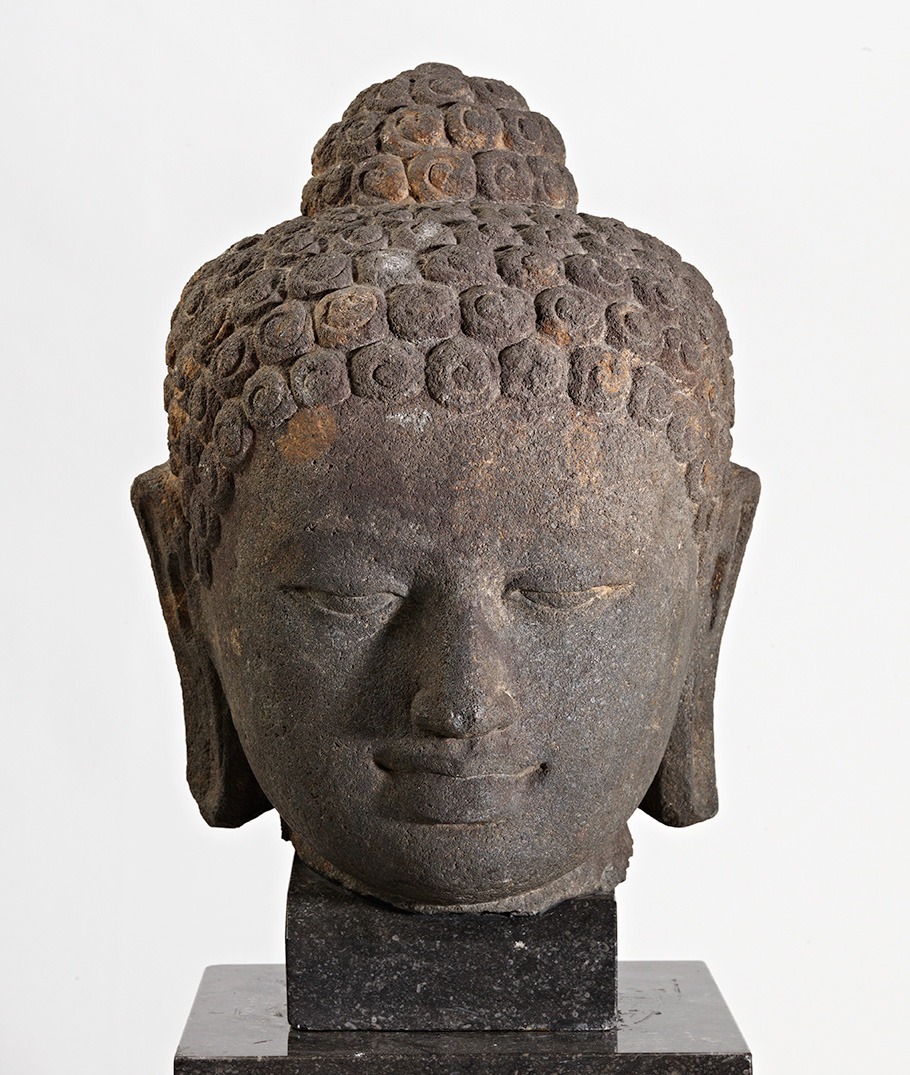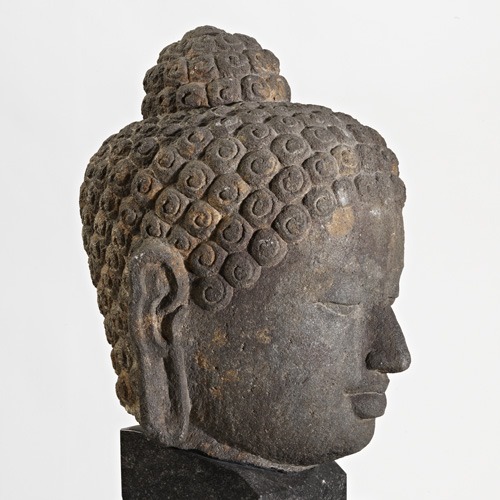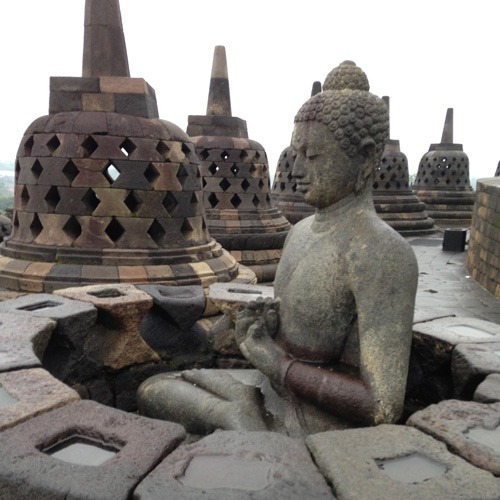 ? ?
? ?
Objects can have many lives and circuitous travels. Although the journey of this Javanese piece from Indonesia to the West is lost to history, its arrival at the Freer|Sackler is a twentieth-century saga.
In 1939, as the Nazis advanced across Europe, a Jewish dealer of Asian antiquities closed his Amsterdam gallery and sent objects to New York for safekeeping. In 1946, after the end of the war, a German banker who had lived in Switzerland for many years purchased this head and lent it to an American museum. The US government alleged that the banker had aided the Nazis and seized his assets under the Trading with the Enemy Act of 1917. The buddha head was later transferred to the Smithsonian Institution, and the Freer Gallery of Art formally accessioned it in 1978.
Rear view, the Historical Buddha (S1997.28)

We don’t know exactly what this buddha’s body looked like, but we have comparable examples from the same period in Java. Many of these sculptures are found at the spectacular architectural sites built by the Shailendra dynasty. Although the photo above depicts a much larger image from the site of Borobudur, it provides an excellent example of the smooth, tubular bodies and clinging, almost invisible garments that characterize Buddha images made at that time.
Buddha at Borobudur, Java, Indonesia; Courtesy of Robert DeCaroli